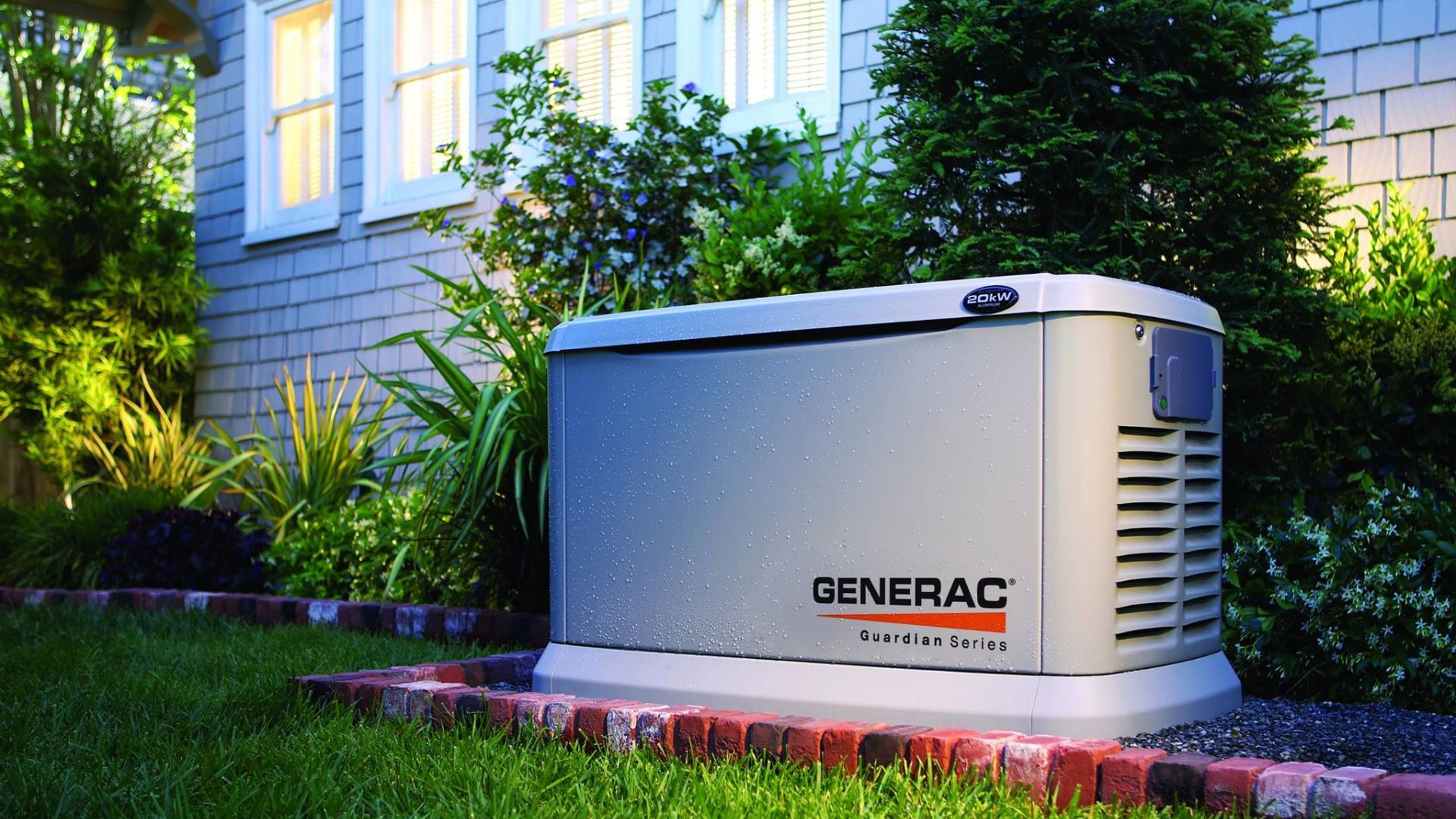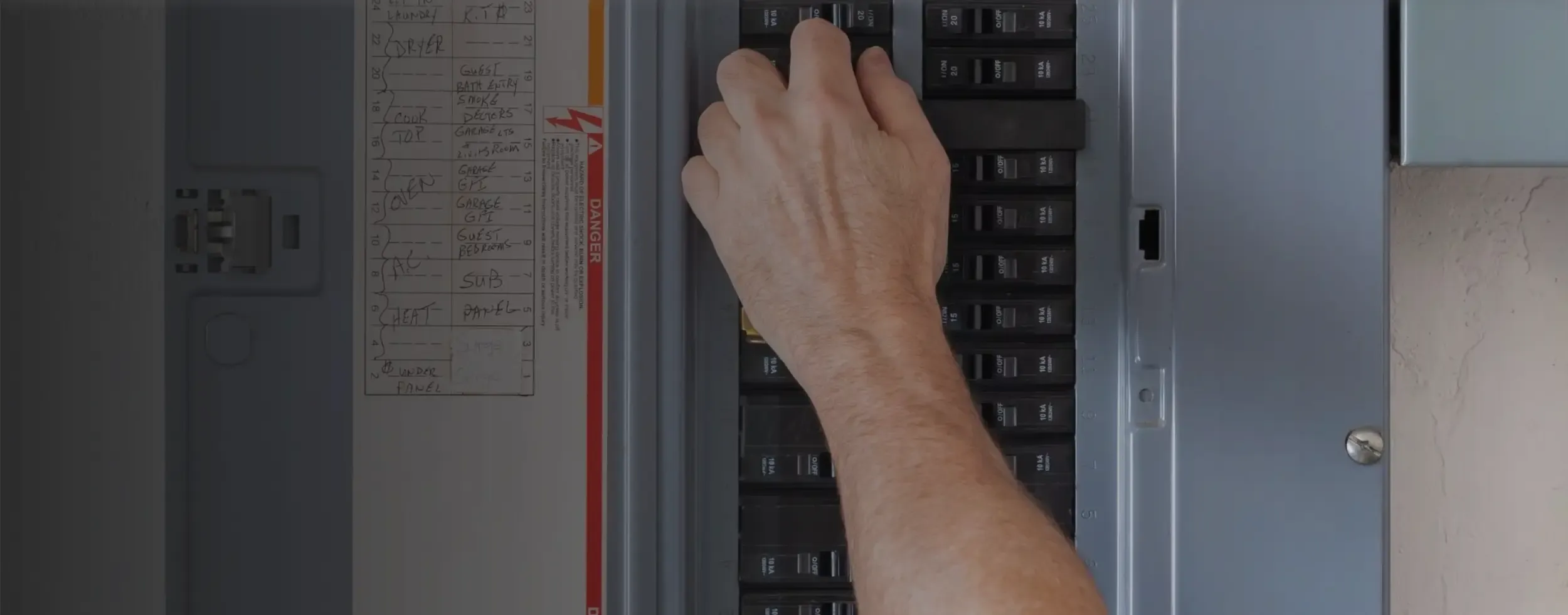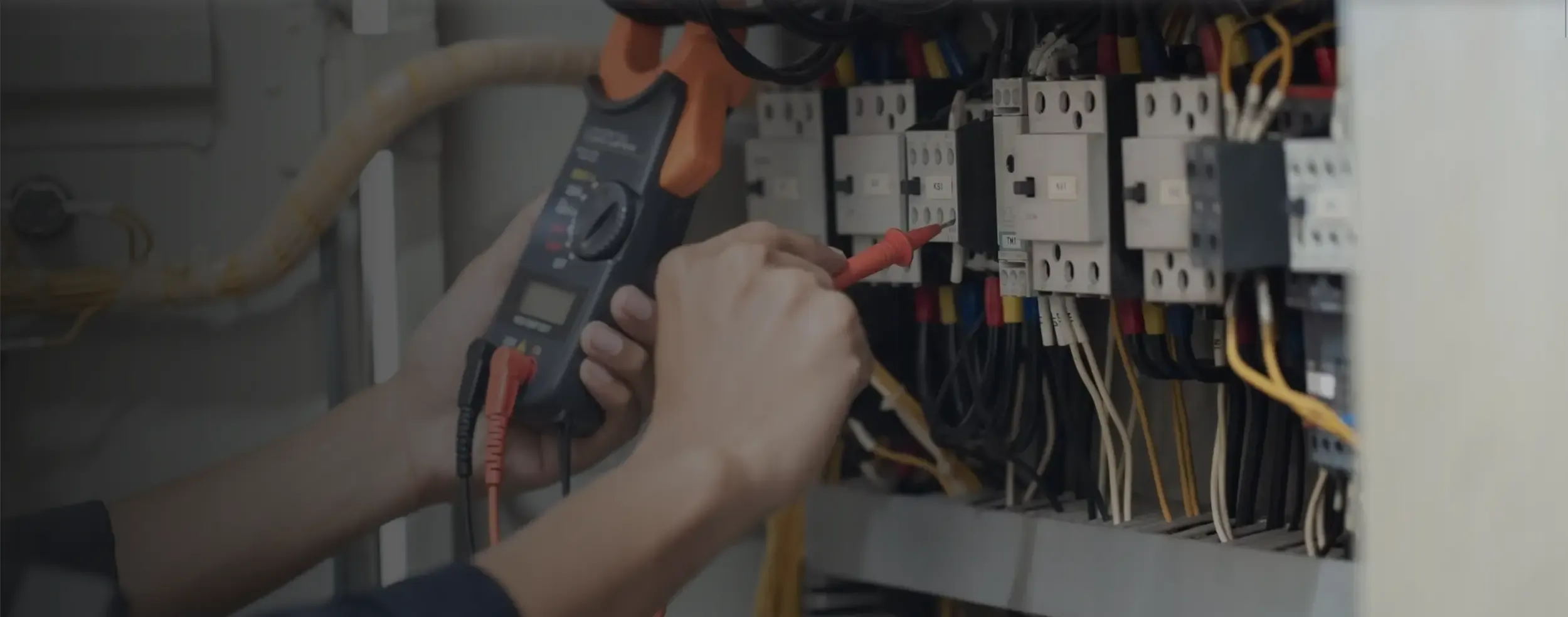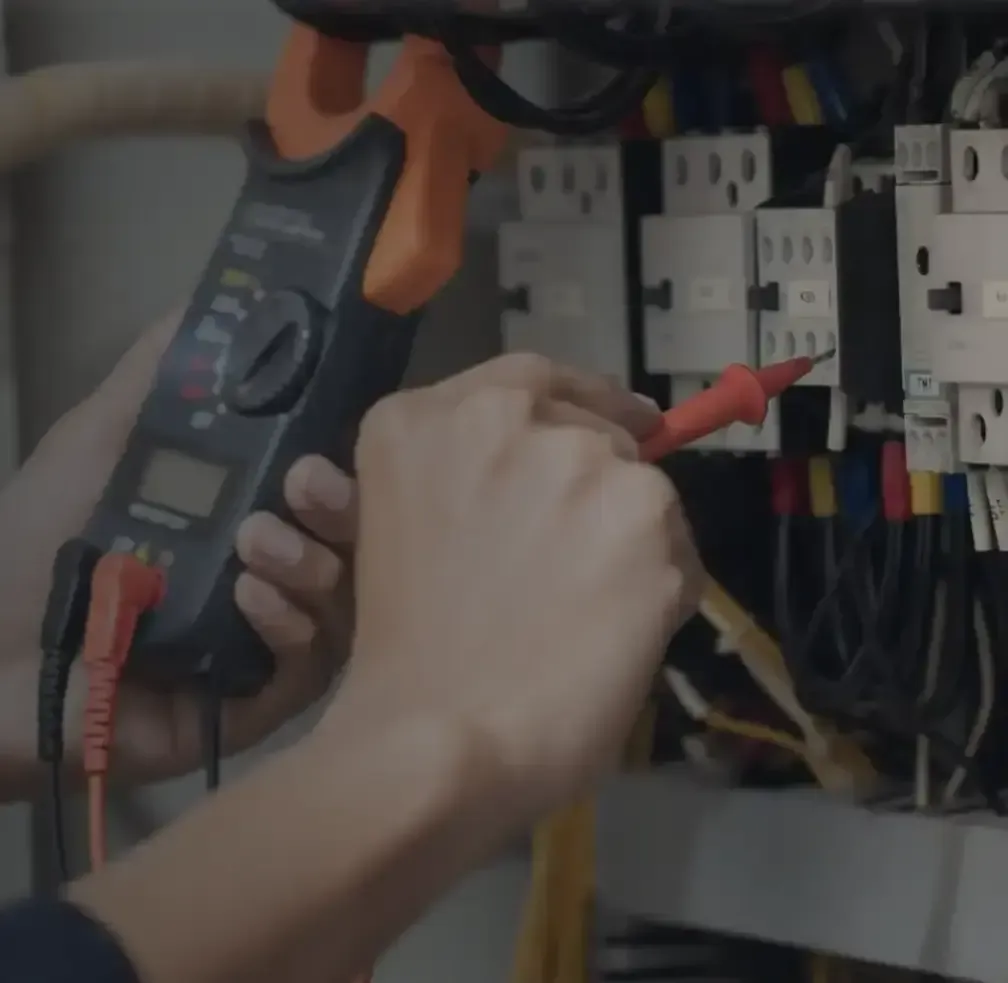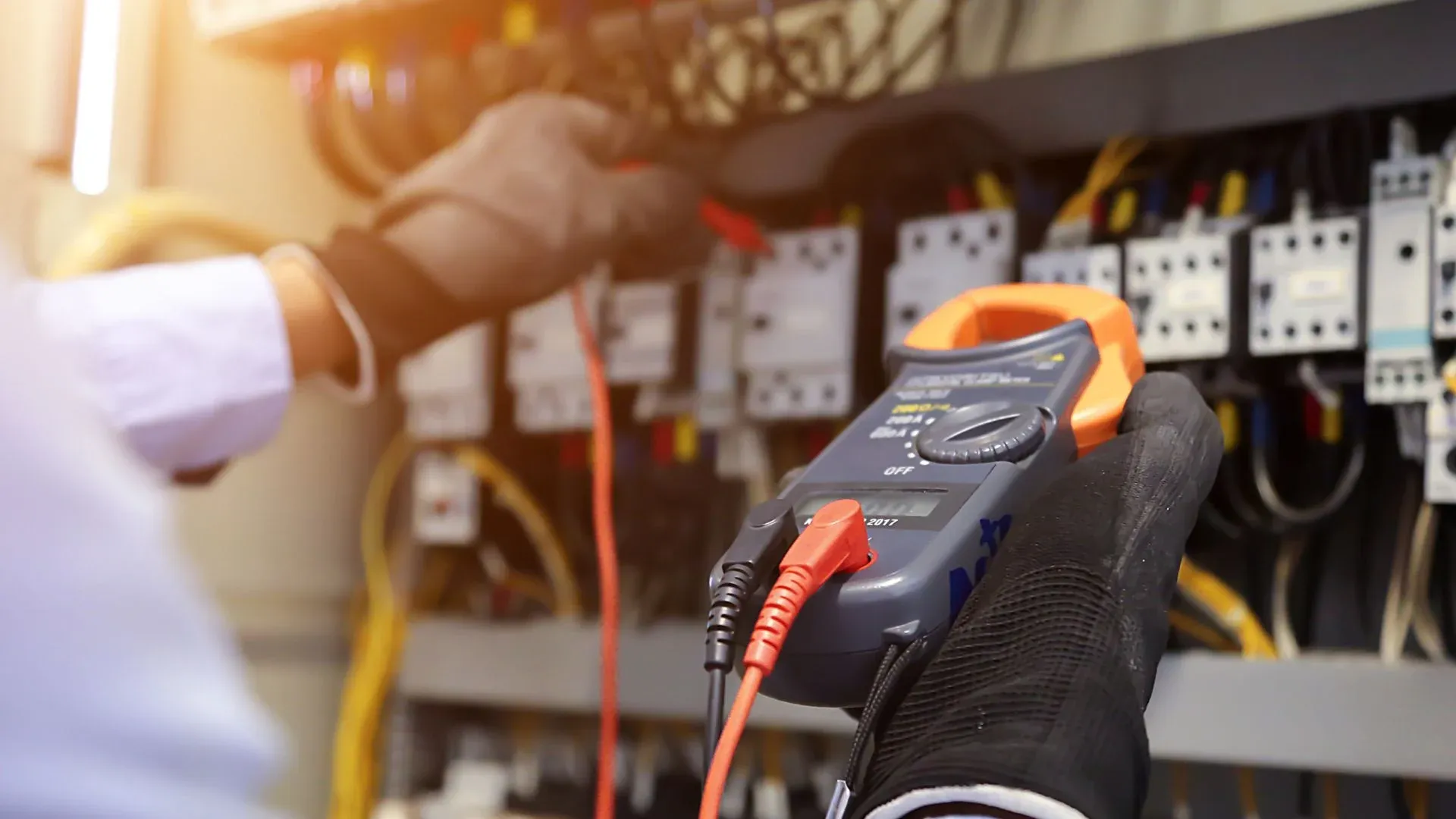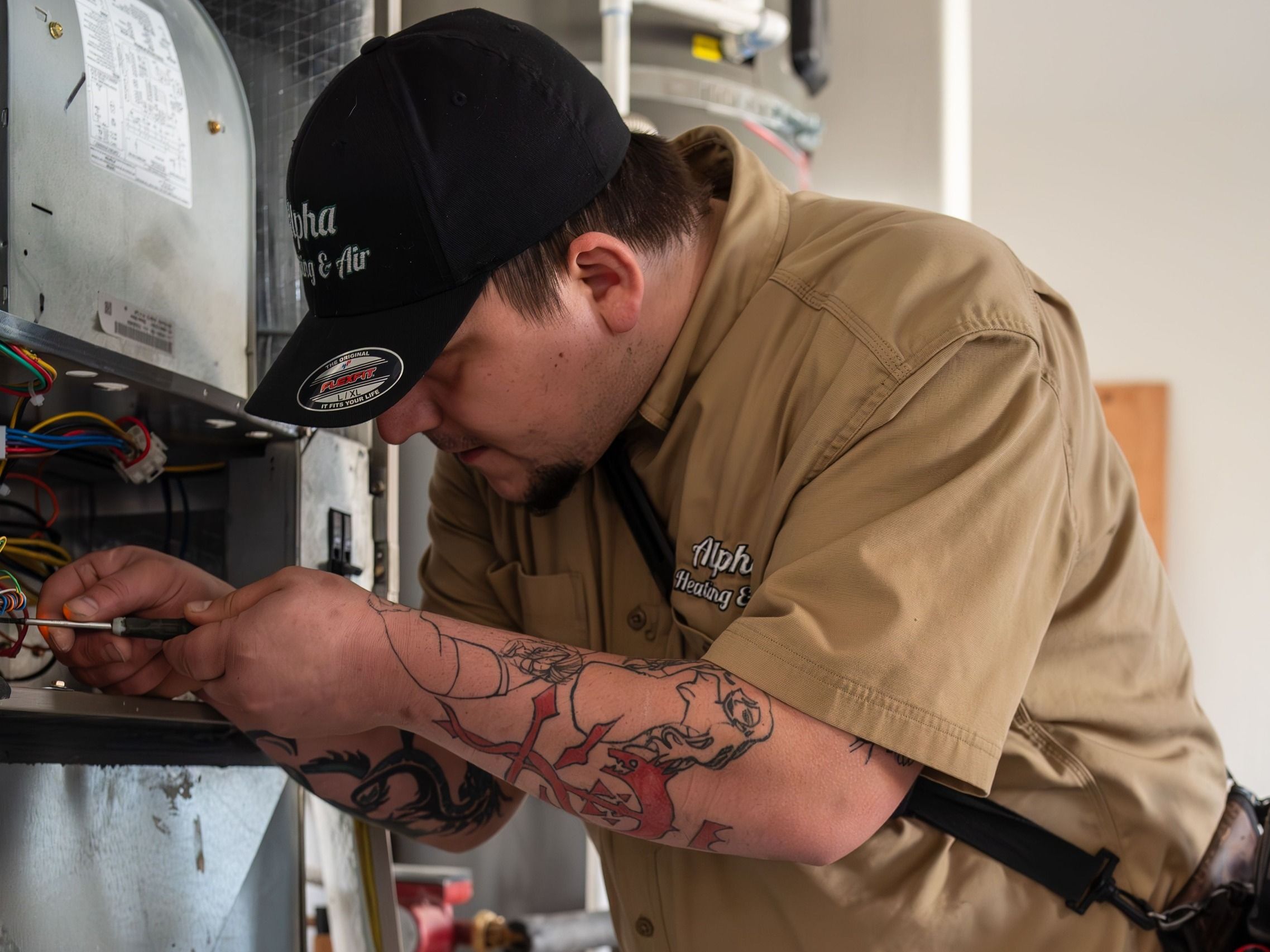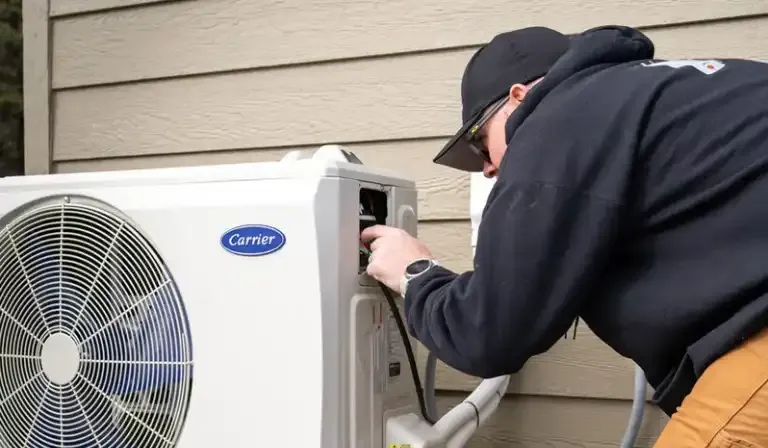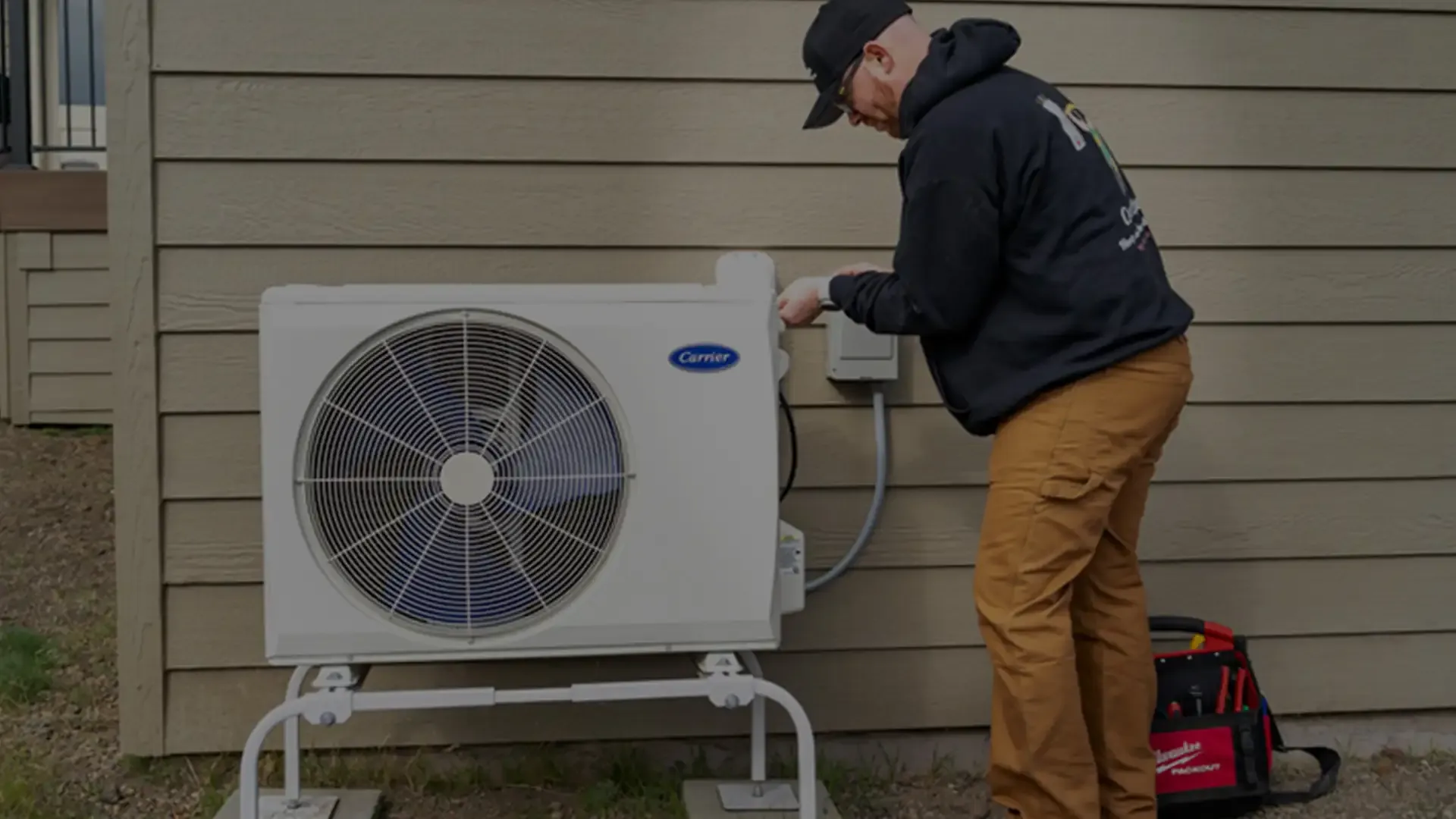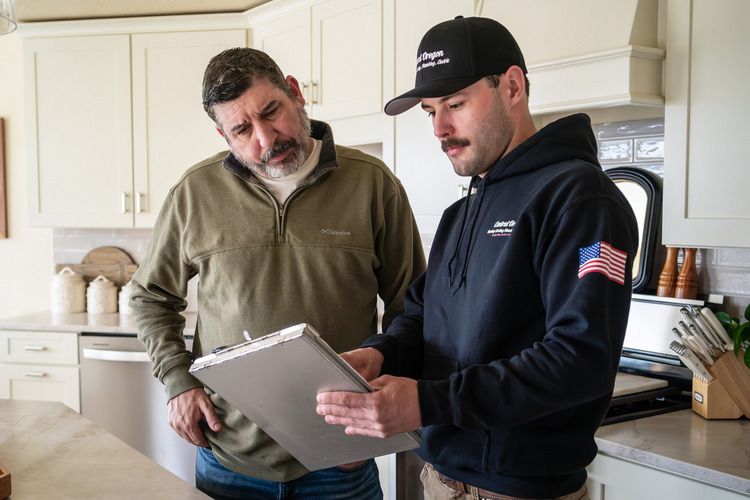With sunnier days just around the corner, it’s time to make sure your air conditioning unit is prepared for the summer. If your air conditioner is struggling to perform, be proactive by researching typical AC replacement costs in Bend. Once an air conditioner needs repairs more frequently, it makes more financial sense to simply replace the entire unit.
At Central Oregon Heating, Cooling, Plumbing & Electrical, we can help with all of your cooling needs. Once you reach out to us, we will quickly send one of our heating, ventilation, and air conditioning (HVAC) technicians out to your home. Then, we can evaluate the state of your AC unit and help you decide if a replacement is the best choice.
Whether you’re trying to diagnose a repair or need help calculating a reasonable AC replacement cost in 2025, we have you covered. Give us a call today to learn more.
Bend’s Average AC Replacement Costs in 2025
Over the years, we’ve installed and replaced many different types of air conditioning units. Your new AC unit cost will typically depend on a few key factors.
- The brand of AC
- The complexity of the installation process
- Your unit’s total capacity
- What type of additional HVAC equipment you need to install
- Ductwork installation requirements
- The amount of rebates and tax credits
- Line set protection
Each project is different, so the total cost can vary significantly. However, the majority of projects will cost around $10,000.
Major Factors Affecting AC Replacement Costs
Each case is a little different, so the overall cost to replace an AC system can vary. Because of this, it’s a good idea to schedule a consultation with one of our HVAC experts. One of our technicians can review your home’s layout and calculate the load capacity you need. Then, we can determine the best brand and model of cooling unit for your home.
While each situation is unique, the following factors will play a major role in determining the overall cost that you will pay for complete AC installation service.
The Size and Type of System
When an HVAC technician refers to the size of the AC, they’re not talking about its physical size. Instead, they’re referring to the unit’s cooling capacity. In general, the cooling capacity is represented by tons or British Thermal Units (BTUs). A ton of cooling capacity is the same as 12,000 BTUs.
To determine the capacity you need, we will calculate the AC load. This involves factors like the internal load, design, and thermal enclosure. Additional factors can also play a role, such as your home’s orientation, the number of windows, and how many occupants live there.
It is important to only buy an air conditioner that has the appropriate cooling capacity. If the AC is too small, it will remain on for extended periods of time and end up wearing down prematurely. Similarly, overly large ACs will switch off too soon because they can reach the appropriate temperature too quickly. Over time, this type of short cycling can end up damaging your air conditioner.
Energy Efficiency Ratings (SEER2)
Another factor in determining AC replacement costs in 2025 is how energy-efficient the unit is. In general, the latest technologies and higher energy-efficiency levels will cost more. However, many of these units will also save you significant amounts of money in the long run on your energy bills, so a better energy-efficiency level may lower the long-term costs.
The energy efficiency of AC units is determined through something that is known as the Seasonal Energy Efficiency Ratio 2 (SEER2). SEER2 is calculated using the following formula.
SEER2 = Total Cooling Output (BTUs) / Total Electrical Energy Input (watt-hours)
The resulting calculation shows how much heat the AC is capable of removing during the cooling season. When your AC has a higher SEER2, it means that it is capable of removing more heat from your home. By getting an air conditioner that has a better SEER2, you can end up using less energy each month. Besides reducing your utility bills, this also helps your home become more environmentally friendly.
Complex Installations and Labor Costs
There are many factors that can make an AC more complex to install, and all of these factors can impact your AC replacement costs in Bend. For example, the unit’s location and how difficult it is to access can make the installation process more complicated. Similarly, specialized equipment and the unit type can impact its complexity as well.
When a unit is more difficult or time-consuming to install, it will generally lead to more labor hours. As a result, the final air conditioner replacement cost will be higher.
Changes to Your Ductwork
In the United States, the typical home loses about 20% to 30% of the air produced by an AC because of leaks and holes in the system’s ductwork. In fact, this is one of the reasons why it is so important to get your ductwork inspected during routine maintenance appointments. If the HVAC technician notices pinholes and tears, they can use specialized equipment to seal any holes and gaps.
While minor issues can be repaired, other ductwork damage necessitates a full replacement. Depending on whether you get a central air conditioner, heat pump, or ductless mini split, your HVAC installation costs will vary. If you have to install entirely new ductwork or replace large sections of your existing ducts, it will impact the overall cost of the project.
Geography and Climate
There are many reasons why your central air replacement cost can vary based on the local climate and geography. In hotter parts of the country, there may be higher prices during the peak months of summer because everyone needs repairs and replacements performed. Similarly, a hot, humid climate may require a larger AC or a dehumidifier, which can increase the total cost of your AC replacement.
Geographically, there are multiple factors that can impact the air conditioner replacement cost. If you live in an area with a high cost of living, your provider will need to cover higher rent and overhead costs. Often, areas with high costs of living also have higher labor costs, which directly impact how much the installation will set you back.
The Brand and Model
The brand and model will also affect your overall cost. Ductless mini-splits, heat pumps, and central air conditioners have different price ranges. Even within a single group like heat pumps, there are air and geothermal options that have significantly different prices.
Often, top brands will have better reputations and cost more. Sometimes, this is based on the underlying quality of the materials and equipment. By working with our HVAC technicians, you can determine when it is worth spending a little more for a better brand and when it doesn’t make sense for your family’s needs.
Home Insulation
Your existing home has an impact on your AC installation costs. When the insulation is poor, it allows more heat inside and forces your AC to work harder. Bad insulation means you’ll need to get a larger cooling unit, leading to higher costs.
Geographic Micro-Climates in Central Oregon
In addition to considering the overall climate, you also need to consider the different microclimates in Central Oregon. The altitude of the area you’re in can determine the AC capacity you need and the resulting cost. High altitude areas have lower air density. This reduces the cooling capacity of your AC and can end up straining the motor. As a result, you’ll likely need to spend more to get an AC with a larger capacity if you are in a high altitude area rather than one of Central Oregon’s valleys.
Smart Technology Integration
When you install your new AC replacement, you may want to incorporate smart technology. Zoning systems, smart sensors, and Wi-Fi thermostats can increase the cost you end up paying upfront. However, these types of tools will often save you money in the long run.
Permits and Inspection Fees in Bend
Depending on which city you’re located in, you may have additional permits and inspections required before you can use your new AC. Currently, Bend charges $35.96 to install air conditioning units. Our team has years of experience working in the Bend area, so we can help you with all of the permits and regulations in your neighborhood.
Other Costs to Think About
In addition to the brand and SEER2, there are a few other factors that can make a difference in your cost to replace an AC system. When you call us to schedule your consultation, we can review the additional costs that may be involved in getting an air conditioner replacement.
- Thermostat Upgrades: With a smart or programmable thermostat, you can schedule different temperatures for different times of the day. In fact, smart thermostats can be linked to your phone, so you can easily adjust the temperature if you don’t plan on returning home for a while. While upgrading your thermostat can cost more money, it is often a wise investment choice because of the energy savings.
- Equipment Removal: Many homes already have a heat pump or central air conditioner installed. If you have an old device that needs to be removed, it can add to the total HVAC installation cost.
- Electrical Panel Upgrades: Often, electrical panels will last decades as long as they are properly maintained. However, older electrical panels may need to be replaced. These electrical panels weren’t designed for all of the gaming systems and electrical devices used in a modern home, so continuing to use an old panel can be a major safety issue.
The Effects of 2025 EPA Refrigerant Regulations
In recent years, there have been changes at the EPA that can affect the cost to replace an AC system. R-410A is being phased out in all new installations beginning on January 1, 2025. While existing units can still be serviced and repaired with R-410A, new systems are now transitioning to lower-GWP refrigerants like R-454B or R-32. You likely won’t be able to install an R-410A AC system unless a contractor still has leftover inventory, which is becoming increasingly rare.
This change is impacting the AC replacement cost in 2025 in a few important ways. It has caused higher demand for new units, which causes supply chain delays and higher overall costs. Currently, R-32 and R-454B are the recommended systems for new AC installations.
Many businesses and homeowners are getting heat pump and central air replacements that do not use R-410A. Because this can add to how long it takes to get your AC replaced, it’s a good idea to schedule your replacement as early as possible.
Federal Tax Credits and Rebates for ACs in Bend
Luckily, there are a few ways you can reduce the AC replacement cost in Bend. There are multiple state, local, and federal tax credits that you can use when you get a new AC. Each one has specific requirements, so it’s essential to understand the requirements before you buy a new AC model.
Federal Energy Efficiency Home Improvement Credit
For instance, the Energy Efficiency Home Improvement Credit is a federal tax credit that is worth up to 30% of the value of your home improvements. It went into effect on January 1, 2023.
While this credit maxes out at $3,300 in a year, specific home improvements have their own limits. Energy-efficiency improvements are limited to just $1,200 in credits per year. There are specific limits on windows ($600), skylights ($600), and doors ($500). Additionally, heat pumps, boilers, and biomass stoves are eligible for up to $2,000 in credits.
This federal tax credit is nonrefundable. Besides the $2,000 in maximum credits for heat pumps, you can get a maximum credit of $600 per year for an energy-efficient central air conditioner. If you schedule a home energy audit to figure out what you need to do, you can get a maximum of $150 back as a tax credit.
Oregon State Programs
In Oregon, there are other specific programs that can help you save money. The Energy Trust of Oregon offers rebates for energy-efficient products.
Meanwhile, the Home Electrification and Appliance Rebate (HEAR) in Oregon will give you up to 100% of the costs of an electric heat pump, as well as the cost of other appliances that use electricity. This program is designed to help low-income and middle-income households, so low-income households can receive a credit worth up to 100% or $14,000. Middle-income households can get a credit of up to 50%.
How To Qualify for an Energy Rebate
There are many different state, federal, and local programs that can help you lower the overall costs of a new AC unit. When you meet with one of our HVAC technicians, we can discuss the best methods for lowering your overall air conditioner replacement cost.
The exact qualifications for each rebate vary based on the program. While HEAR is an income-based program, Energy Trust isn’t. To get an Energy Trust rebate, you must get a qualified unit installed by a participating contractor in a home you own. You must apply for the rebate online or by mail within 60 days of getting the installation.
How to Know When You Should Repair or Replace Your AC
If it’s possible to repair your AC unit, you may be able to save money and delay the purchase of a new unit. However, it can be difficult to tell when an AC replacement makes more sense than simply buying a new one. In general, you should consider the following factors before you decide to repair or replace your HVAC system.
- Energy-Efficiency: Older AC units are often less efficient than newer models. Additionally, AC units become less energy efficient as they age and start to break down. If your energy bills have started to skyrocket for no discernible reason, it may be time to think about getting a replacement.
- Age: A typical heat pump or central air conditioner will last for around 10 to 15 years if it has been properly maintained. Once your cooling system is at least 10 years old, you may want to consider replacing it. Repairs will keep adding up as it ages, so the overall cost of repairs will eventually be higher than the amount you’d have to spend on a replacement.
- Recurring Repairs: One way you can tell if it is time for a new AC is by paying attention to the frequency of repairs. If your AC is breaking down constantly, it may be time to invest in a new model.
- Cooling Problems: There are often signs that your AC is going to break down before it happens. For instance, you may notice hot and cool zones in your rooms. The AC may take longer to cool your home, or you may notice unusual sounds. Once your air conditioner can no longer meet the performance requirements you require, you need to get a replacement.
Among HVAC technicians, you’ll often hear people discuss a general rule of thumb. If the AC repair will cost less than $5,000, it’s generally a good idea to just do the repair. When the repair costs more than $5,000, you’re better off getting an entirely new unit.
Although there may be occasional exceptions to the rule, it generally holds true in most situations. The higher the repair costs are, the less sense it makes to perform them.
Once you do get a new AC installed, there are a few things you can do to prevent future repairs and replacements. By investing in our membership plan, you can automatically receive routine maintenance appointments. In addition to preventing repairs, these tune-ups can also ensure your AC is as energy efficient as possible.
The Installation Process
If you need an AC replacement in Bend, our team can help. From your initial home evaluation to the final walkthrough, we’ll work quickly and diligently to install your new cooling system. As a homeowner, you can expect the following installation process.
- Home Evaluation & Load Calculation: First, we conduct a thorough home evaluation. This is when we’ll look at your square footage, insulation, geographic location, and other factors to create an accurate load calculation.
- Old Unit Removal: When the day of the installation arrives, our HVAC technicians will work quickly to remove the old unit.
- Ductwork Inspection and Repair: Leaky ductwork can reduce your heating and cooling efficiency by up to 20%. By getting your ducts inspected and repaired, you can save on energy costs.
- New Unit Installation: Once the old unit is gone and your ducts have been repaired, we can install the new AC. We will work quickly to minimize any disruption to your loved ones.
- Electrical & Refrigerant Setup: Next, our HVAC technicians will work quickly to connect the new unit to your electrical system. We’ll connect the indoor and outdoor units with refrigerant lines. Afterward, we’ll vacuum the lines to remove contaminants before we add the refrigerant.
- Testing & Final Walkthrough: After the installation is complete, our HVAC technician will perform the final performance tests. If everything is functioning properly, we can clean up our workspace and do a final walkthrough.
Tips for Saving Money on Bend AC Replacements
Even with the best air conditioning maintenance possible, a replacement will eventually be necessary. Most people don’t save thousands of dollars for the mere possibility that their HVAC system may fail, making this type of expense especially difficult to budget for. When this happens, there are a few things you can do to keep the cost down.
Take Advantage of Our Financing Options
We know how hard it is to budget for an unexpected AC failure. When a breakdown happens, you don’t have to stress. We have multiple financing options in Bend that can help. For example, we offer short-term and long-term loans with low interest rates as well as varying monthly payment ranges. Each situation is different, so check out our financing plans to see if there is an option that works for your family’s needs.
Use a Manufacturer’s Promotion
From time to time, manufacturers will have promotions that involve rebates or discounts on their products. While you can’t wait for a promotion to happen if your AC breaks down on a sweltering hot day, many AC issues exhibit early warning signs. Once you notice your AC experiencing more frequent problems, you can always keep an eye out for any new promotions or sales. You can also check out our specials page to see what some of our latest sales and discounts for HVAC systems are.
Look for Rebates
State, federal, and local governments incentivize energy-efficient appliances. Because of this, there are likely rebates and tax credits that you can qualify for.
To make sure you maximize all of your credits, make sure to research the best options before you settle on a specific type of unit. Once you know that the unit will be eligible for as many rebates and credits as possible, you should carefully track all of your receipts. Then, you can use these receipts to file for the rebate or turn in your tax credit form.
Get a Home Energy Audit
Prior to any installation, you should have one of our technicians perform a home energy audit. This will help you figure out where heat loss is happening in your home and the energy-efficiency measures you need to save money on your energy bills. Afterward, make sure to keep your receipt because the federal Energy Efficiency Home Improvement Credit will give you 30% back from your energy audit expenses, up to $150.
Ask for Multiple Quotes
To make sure you’re paying a reasonable price for your AC unit, ask multiple HVAC companies for a quote. We are always happy to provide a free quote on your AC installation. Once you receive the quotes, check to ensure that they all include the same services and equipment so that you can easily compare them. Then, you can pick the quote that matches the benefits and price range you need.
Schedule Your Replacement for Off-Peak Seasons
Often, it costs more to have your AC replaced during the hottest parts of the summer. During peak season, everyone is trying to access the same services, which can lead to higher replacement costs. If you think that your AC needs a replacement, try to schedule it in the spring or fall so that you don’t have to compete with everyone else who needs a repair or replacement at the last minute.
Don’t Forget Your AC Tune-Up
The best way to prevent future AC replacements is by making sure your new AC is well cared for. Routine maintenance appointments help you diagnose problems, lubricate moving parts, and clean dirty components. As a result, your AC will be less likely to break down in the long run.
Use Our Bundled Deals
To save money, consider getting multiple systems replaced at once. We offer bundled deals, so you can save money whenever you get an AC replacement at the same time as a duct cleaning or smart thermostat installation.
Sign Up for Maintenance Plans
By taking part in our maintenance plan, you can save money in the long run by avoiding costly repairs. The maintenance plan includes two complimentary tune-ups per year, so you can also reduce the amount you have to spend on tune-ups. Additionally, members get a discount on repairs.
Timing Your Replacement
When planning your AC replacement, the best option is to plan ahead for spring or fall. Off-season scheduling often means lower costs.HVAC technicians aren’t as busy, which leads to lower costs and better flexibility. In Bend, demand typically spikes right before heatwaves arrive in July and August, so it’s important to be proactive.
It’s also a good idea to consider current supply chain issues. Because of refrigerant phasedowns, there’s a bottleneck for certain refrigerants and parts. To avoid delays, it’s important to schedule replacements as early as possible.
Frequently Asked Questions
How long does it take to replace an AC in Bend?
While each home is unique, it generally takes us just one to two days to replace an AC in Bend. Our HVAC technicians arrive on time with fully stocked trucks, so we’re ready to get started right away. We strive to have the least downtime possible for your loved ones.
Do I need new ductwork with a replacement?
Getting new ductwork isn’t always necessary. It all depends on the condition. When we do an AC replacement, we always inspect the ductwork for leaks. As needed, we can repair and replace the ducts.
What’s the difference between AC replacement and repair costs in 2025?
Depending on the unit type, capacity, and other factors, an AC replacement in 2025 typically costs between $5,008 and $28,509. In comparison, AC repairs cost between $130 and $2,000. The average is $350. When your AC breaks down, it’s important to compare the cost of repairs to the cost of replacing the unit. The age, overall energy efficiency, and the likelihood of recurring repairs play a role in whether repairs make sense or not.
Discover the Best AC Replacements in Bend
Once your cooling system starts to fall apart, it’s a good idea to start researching the AC replacement cost in 2025. Refrigerant bans, state rebates, and other factors can play a major role in the cost of your unit, which is why it’s so important to consult with a professional HVAC technician. During the initial consultation, one of our technicians can help you determine the best AC for your home, the overall cost, and which rebates you’re eligible for.
Over the years, we’ve developed a reputation for providing high-quality, personalized services to Oregon homeowners. Discover an affordable AC replacement cost in Bend by visiting our site today.
